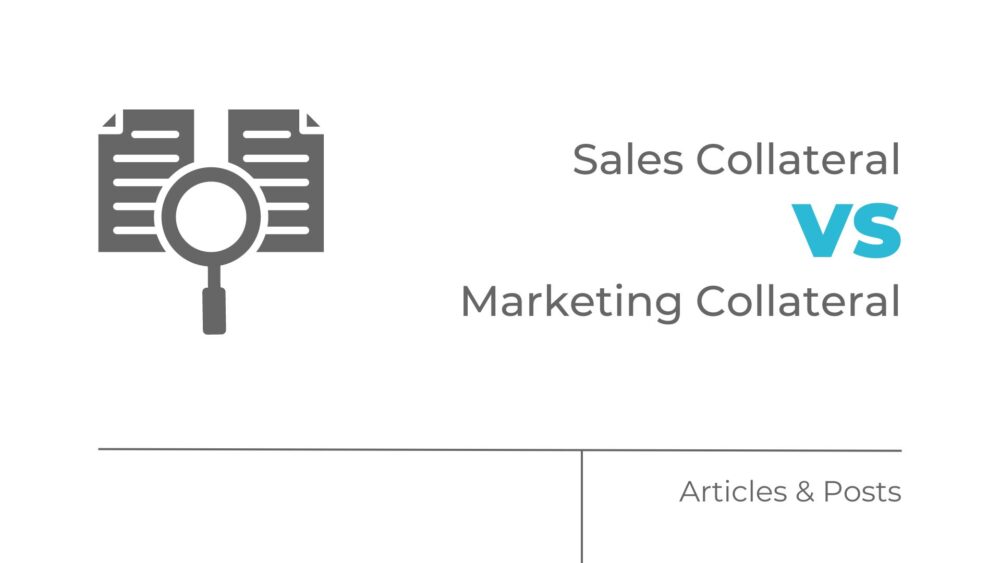Sales collateral vs marketing collateral: which one do you need?
Sales collateral is designed to directly support sales activities, while marketing collateral focuses on raising brand awareness and generating interest.
Let’s explore them more so you can evaluate where to go from here.
What is Sales Collateral?
Sales collateral includes all the materials that help salespeople close deals.
These can be brochures, product sheets, case studies, and presentations.
Sales collateral provides detailed information about products or services, addressing specific customer needs and pain points to persuade them to make a purchase.
Examples of Sales Collateral
- Brochures and Flyers: These provide detailed product information and are often used during sales meetings.
- Case Studies: Real-world examples of how a product or service has helped other customers.
- Sales Decks: Presentations that sales teams use to pitch products to potential customers.
What is Marketing Collateral?
Marketing collateral refers to the materials used to promote a company and its offerings, aiming to attract and engage potential customers.
This can include items like blogs, social media posts, videos, and infographics.
Marketing collateral is typically less about making immediate sales and more about building brand awareness and interest.
Examples of Marketing Collateral
- Blog Posts: Informative articles that highlight industry trends or company news.
- Social Media Content: Posts and ads that engage audiences and promote brand values.
- Videos and Infographics: Visual content that simplifies complex information and captures attention.
What is the Difference Between Marketing and Sales Materials?
The primary difference between marketing and sales materials lies in their objectives and how they are used.
Marketing collateral aims to generate interest and build a brand’s reputation, while sales collateral is used to drive conversions and close deals.
Key Differences
- Purpose: Marketing collateral raises awareness; sales collateral closes deals.
- Content: Marketing materials are broader and often more visual; sales materials are detailed and product-specific.
- Audience: Marketing collateral targets a wider audience; sales collateral targets specific leads or customers.
How They Work Together
While marketing and sales collateral have different roles, they are most effective when used together.
Marketing efforts generate leads and create interest, setting the stage for the sales team to use their collateral to convert those leads into customers.
Integration Strategies
- Consistent Messaging: Both types of collateral should carry consistent brand messages and visuals.
- Lead Nurturing: Marketing materials can nurture leads until they are ready for direct sales engagement.
- Feedback Loop: Sales teams can provide feedback to marketing teams about what materials are most effective, helping refine future marketing efforts.
At the End of the Day
Understanding the distinction between sales collateral and marketing collateral is important for developing an effective strategy.
Sales collateral is designed to help close deals, providing detailed product information and addressing customer pain points.
Marketing collateral, on the other hand, focuses on building brand awareness and engaging potential customers.
By leveraging both types of collateral strategically, businesses can create a seamless journey from interest to purchase for their customers.


Comments are closed.